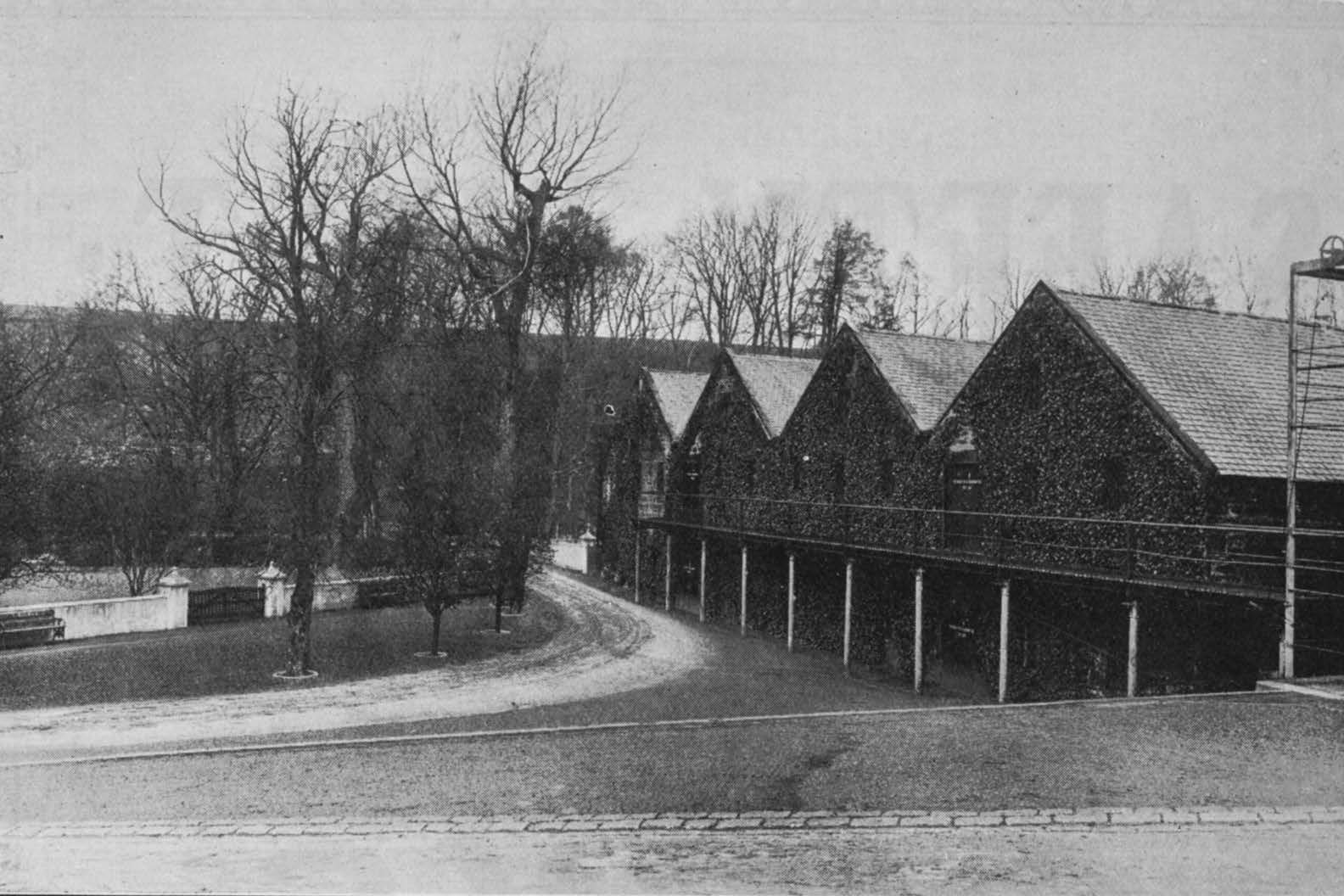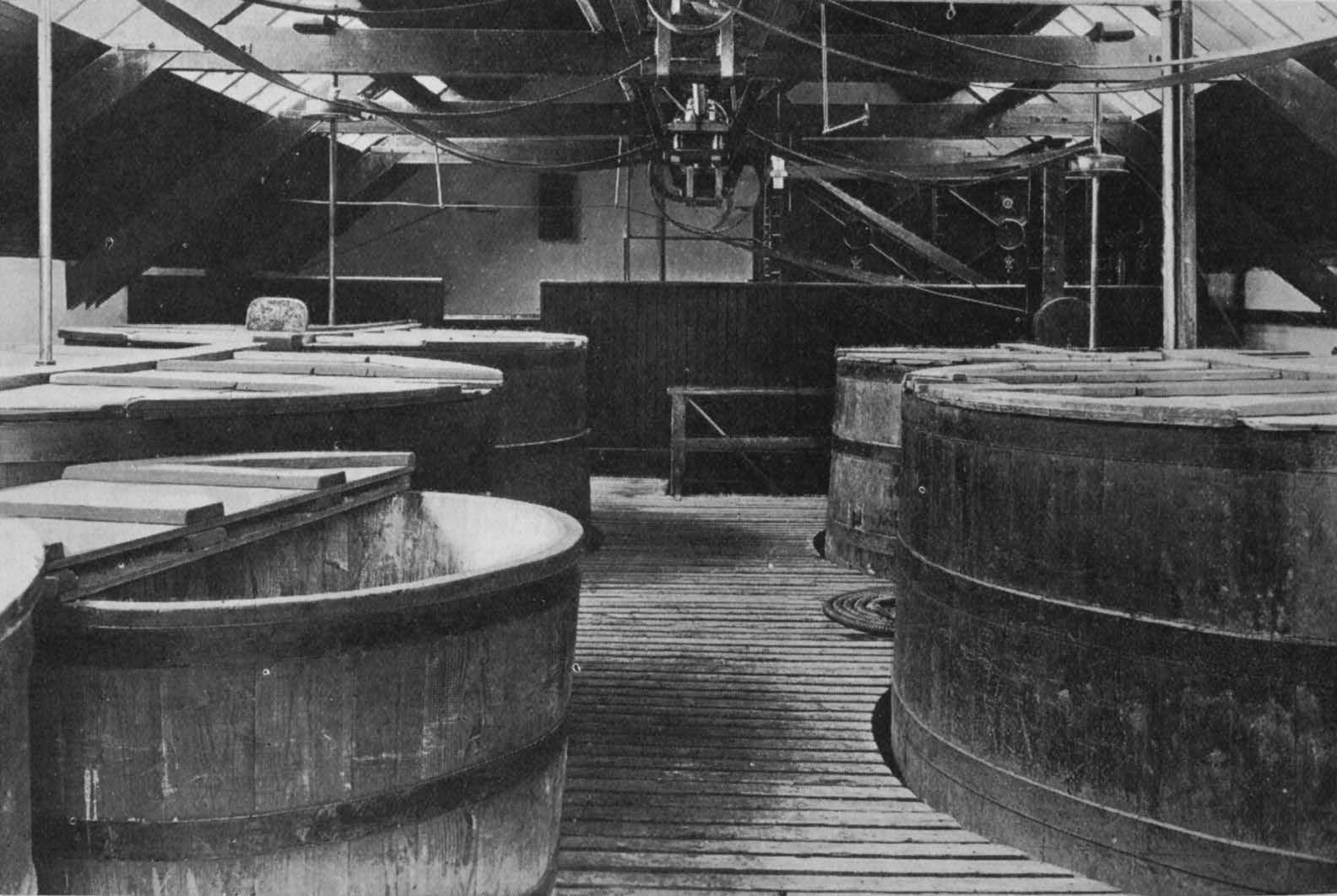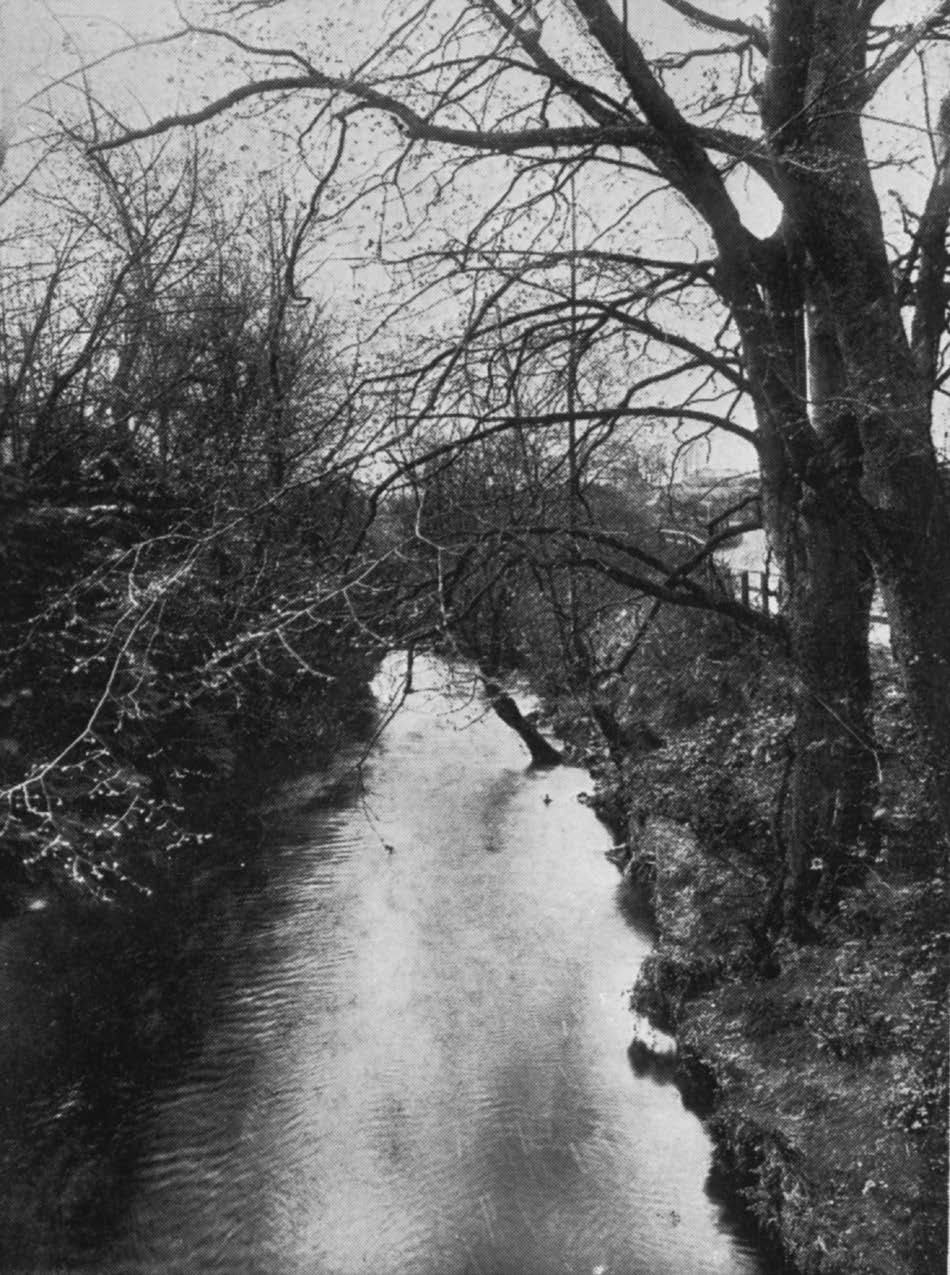CIX
Strathmill Distillery, Keith.
October 14th, 1926
Strathmill occupies a charming site on the banks of the river Isla, which runs through the ancient town of Keith, in the heart of Banffshire. A few hundred yards further down this beautiful river a hot engagement took place in the year 1746, between the forces of “Bonnie Prince Charlie” and the army led by the Duke of Cumberland. On this occasion the rebels had the best of the battle. In the churchyard on the left bank of the Isla there is a spot still known as the “Campbell’s Hillock,” which is supposed to be the last resting-place of the warriors of that fierce Highland clan, who were killed at Keith in the fight already referred to.
Although Strathmill is a fairly modern establishment, one learns with interest that from the year 1820 until 1831 the same site contained a small distillery. Later the buildings were used for housing an engineering works, and successively as flour and meal mills. Towards the end of the past century the premises apparently came into use as a distillery and meal mill combined, and in the year 1895 Messrs. W. and A. Gilbey acquired the whole property, and have since extended it enormously.
The proprietors of the original distillery seem to have been continually at loggerheads with the Revenue authorities. In the year 1829 a barefaced attempt was made to drown the Excise officer (or “gauger” as these officials were called in those days), presumably because he happened to be the nearest emblem of the Revenue department’s prestige. Having cut the bearers of the footbridge leading into the distillery one morning when the river was in flood, they lay in wait for the officer, no doubt with the idea of revelling in the sight of his death struggles. Happily the intended victim made a long detour to avoid the floods, and arriving at his office by an unusual route was surprised to see several crouching figures at the footbridge gazing earnestly in the opposite direction.
Another interesting point in the history of the old distillery that stood on the present site of Strathmill is the curious fact that the Whisky was run into open vessels, and a mug being placed in a convenient position any passer-by on good terms with the management could help himself from what was virtually a Whisky-fountain, and probably the only one that ever existed!
Like Messrs. Gilbey’s two other distilleries, Knockando and Glenspey, Strathmill is a delight to the eye, and the embodiment of cleanliness and efficiency. The yard, near the entrance, is by itself impressive, for one is hardly prepared for shady trees and garden seats among the buildings of a distillery! Besides being beautifully laid out, the premises are artistically decorated in a colour scheme of red and black.
Strathmill enjoys an excellent supply of water which comes from Balloch Hill. Aberdeenshire barley is mainly used in the manufacture of the Whisky. After arriving in the firm’s private siding, consignments are passed through a dressing machine, and thence conveyed to the grain loft by a travelling band. There are two steeps of forty-five quarters capacity, and two extensive malting floors. A two-furnaced kiln fitted with King’s patent regulators and a kiln turner, dries large quantities of malt at each loading, and grinding is done by a two roller mill supplied by Messrs. Day and Company, of Huntly – a firm whose machines and appliances are very frequently observed in the most up-to-date distilleries. Ground malt is conveyed from the mill to the deposits by a steel elevator as a precaution against explosions.
A powerful water turbine, reinforced when necessary by a superb 25 h.p. steam engine, drives the main shafting. In the mashing department 1,050 bushels of malt are now being dealt with each week, but mashing of 1,100 bushels can easily be accomplished. In addition to the usual drag for removing draff from the mash-tun, there is a “Blair, Campbell and McLean” drying machine from which dried draff is conveyed by suction fan to a large fire-proof store. The tun room holds six backs with switches operated by a small engine specially designed for the purpose.
In the course of our visit we noticed also an excellent boiler fitted with a Crossway patent furnace, by which air is forced into the apparatus in such a manner that the correct mixture of gases is always obtained. There are two stills, the larger one having a content of over 2,000 gallons, and six warehouses with accommodation for 750,000 gallons of Whisky. Effluent is run into a settling tank, and, after purification, into the river.
Images © The British Library Board





